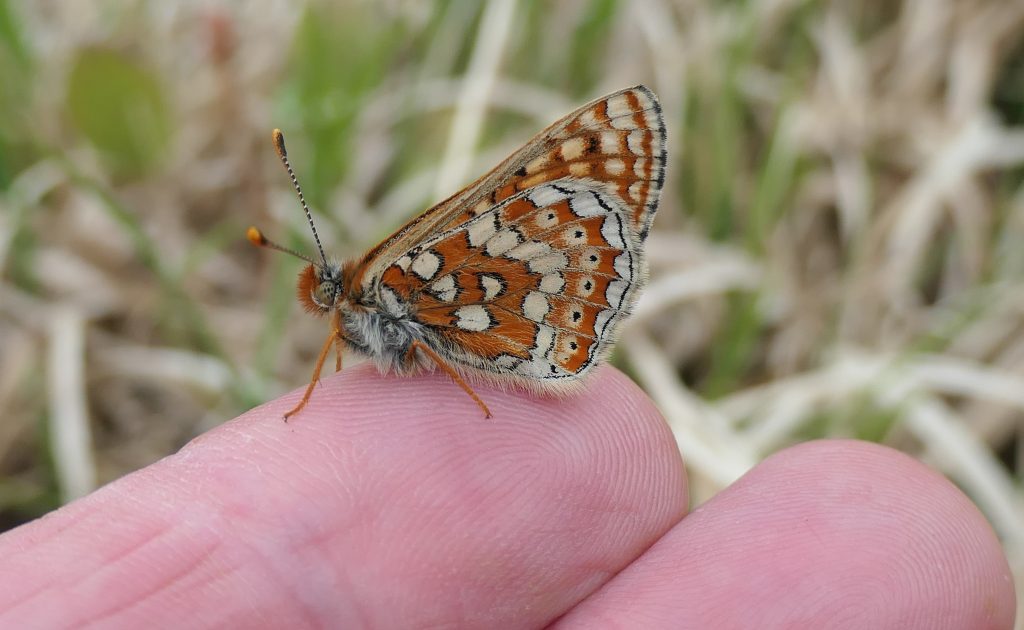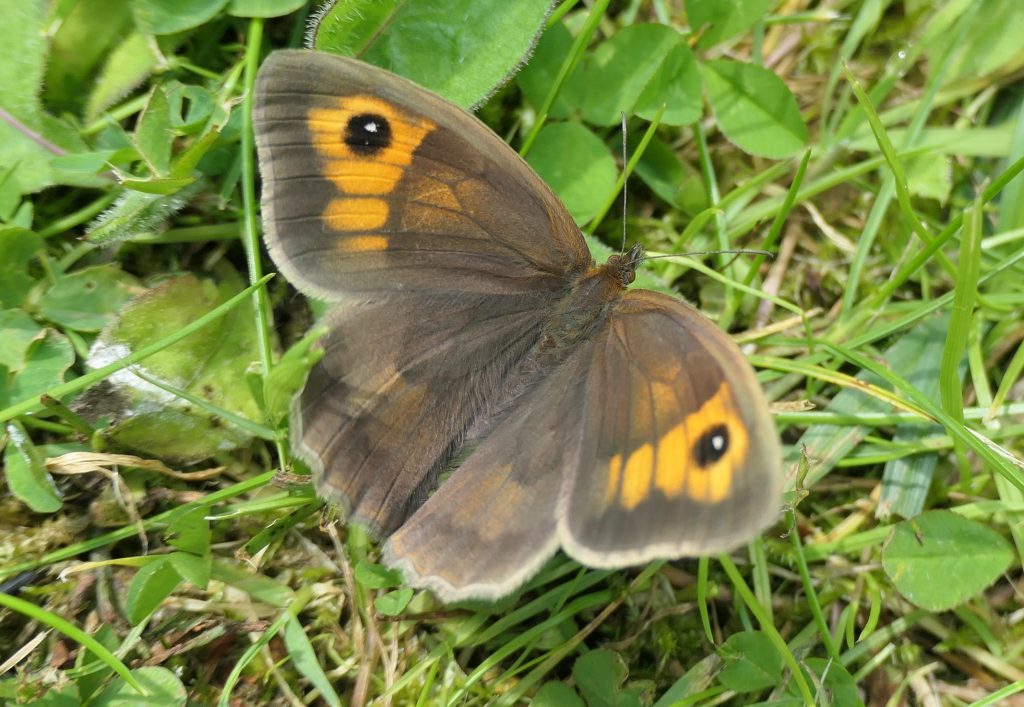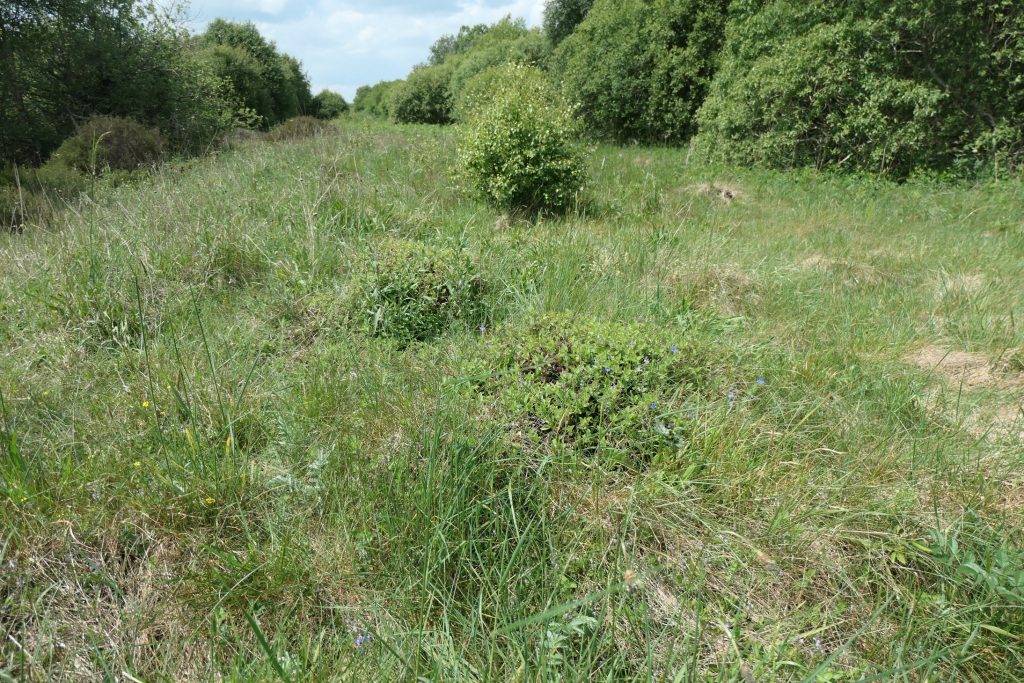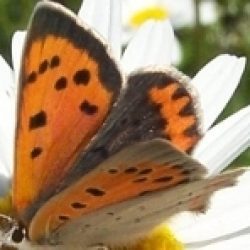Ireland’s Biodiversity Intactness
In a study published by the British Museum, the Republic of Ireland was ranked 13th from the bottom out of 240 countries for biodiversity intactness (Natural History Museum, 2020). Northern Ireland was ranked one place below. The Biodiversity Intactness Index (BII) measures biodiversity change using abundance data on plants, fungi and animals worldwide. The Index illustrates how local terrestrial biodiversity responds to human pressures, including land use change and intensification. The Republic of Ireland’s BII is currently 40% (Dermody, 2024).
The Biodiversity Intactness Index summarises the change in ecological communities in response to human pressures. The BII is an estimated percentage of the original number of species that remain and their abundance in any given area, despite human impacts. The BII is calculated using data from ecological studies conducted worldwide. This data includes more than 54,000 species, encompassing not only birds and mammals, the groups most often used in biodiversity indicators but also plants, fungi and insects.

Ireland has exceeded six of the seven biospherical boundaries (CO2 emissions, material and ecological footprints, land use change and phosphorus and nitrogen) (Murphy 2023), leading to significant adverse impacts on nature and biodiversity. The Biodiversity Intactness Index ranks Ireland in the bottom 10% globally (Natural History Museum, 2020). A key driving factor is habitat loss, as Ireland – similar to the UK – spent two centuries converting land to pasture to support increased livestock numbers (CSO, 2015). National agriculture policy accelerated increases in cattle and sheep in the 1970s, with cattle levels now at record highs. Agriculture occupies 67% of the territory, and Ireland has the second lowest level of terrestrial protected area in the EU at 13.9%, less than half the 30% target by 2030 (EEA, 2023). Other drivers of biodiversity loss include invasive species, pollution, and climate change. Consequently, natural habitats are virtually non-existent in Ireland, and many semi-natural habitats continue to be impacted by human activities.
What are we doing to halt Biodiversity Loss?
In 2019, the national parliament voted to declare both a national Climate and Biodiversity Emergency and in 2023, the Citizen’s Assembly and the Children and Young People’s Assemblies urged the state to take decisive and urgent action. The 2017–2021 biodiversity plan was critiqued for its lack of SMART targets (targets that are specific, measurable, achievable, relevant, and time-bound) and KPIs (Key Performance Indicators). The new plan (2024) aims to address this with clear implementable actions and a Monitoring and Evaluation Framework, with an audit role for the National Biodiversity Forum. The new Biodiversity Action Plan has been on a statutory footing since 2023, with binding goals. However, existing policies and practices in other areas, including agriculture, may inhibit action without a systemic approach.

A Hammer Blow
Indeed, there is evidence for this at the Teagasc conference on extensive grasslands held in Birr, County Offaly, on June 12th. While good practice was described by a number of speakers to an audience of environmentally conscious farmers, the final address, by the Director of Teagasc, Frank O’Mara was a hammer blow to anyone feeling optimistic under the influence of the previous speakers. The Director extolled the economic importance of Perennial Rye-grass monocultures, stating it was vital to the Irish economy and would continue to be a cornerstone of Irish agriculture. This cornerstone produces massive bulk for feeding livestock but only with massive chemical inputs that damage our soils, water, air and biodiversity. This effectively treats soil as dirt, waterways as sewers and turns air into toxic gas.

Anyone who doubts the Director’s words has to look at the abundance levels of Ireland’s butterfly populations. ‘Plummeting’ is not hyperbole. The Meadow Brown is down 86% from its 2008 abundance over the period 2008-2021; the Green-veined White is down 87.2%, and the Ringlet -88%. All are widespread grassland species, showing widescale decline.
Woodland and Grassland Loss
Let’s look at just two habitat classes, woodland and grassland. Native woodland has almost disappeared. Ireland has no large forest. Only 2% of the land area of the Republic of Ireland contains native woodland. And we are still not learning. We continue to favour non-native trees for plantations. The Tree Council of Ireland proudly displayed a poster of trees grown in Ireland at the Bloom Festival in early June. Lodgepole Pine, Sitka Spruce and Sycamore had pride of place. The lady at their information stand insisted these trees were good for nature.
This is utterly wrong, as far as Ireland’s ecosystems are concerned. Native trees, grown from native sources, are good for invertebrate biodiversity. Non-native Sycamore feeds two of Ireland’s macro-moths (larger moths). Native Grey Willow, regarded as a weed by foresters, feeds about 121 macro-moths. Our native oaks support an astonishing number of species. The Purple Hairstreak butterfly and 71 macro-moths breed on oak. UK research found 1,178 invertebrate species using oak, and 257 invertebrates rely solely on our two native oaks. This does not include birds, bats, lichens or mosses using the oaks (Environmental Information Data Centre, 2019).

We still have semi-natural grasslands, but these are vanishing, just as our native woods were eliminated, and farming is the main cause of their removal. The Irish Semi-natural Grassland Survey 2007-2012 visited 1,200 sites (O’Neill et al., 2013). A subset of the sites (c.110 sites) were revisited during 2015-2017. Between the two surveys 31% of the area of species-rich calcareous grasslands, 28% of lowland hay meadows and 7% of Molinia (Purple Moor-Grass) meadows were gone. Fifty-seven of these were species-rich calcareous grasslands. Forty-nine per cent of these had lost area and three sites had gone completely. 65 hectares of habitat were lost overall. These are priority habitats, listed in the EU Habitats Directive as requiring protection.

What are the main threats to these grasslands? Habitat loss is due to intensive agriculture (fertilisation and re-seeding), forestry and construction and land abandonment which is less dramatic and immediate but is occurring over large areas (O’Neill et al., 2013).
Sixty-seven per cent of the land area of the Republic of Ireland is farmed, up from 64% in 2014 (CSO, 2014). This means that the way farming is carried out is crucial. If farmers continue to apply herbicides, pesticides, fertilisers, drainage, re-seeding and scrub clearing then our climate, soil, water and air pollution will continue to deteriorate, and biodiversity will continue to be lost.
The Director of Teagasc was correct. Who cares about life on earth when massive chemical-mediated production on degraded grassland makes $$$?
References
Citizens’ Assembly. 2023. Report of the Citizens Assembly on Biodiversity Loss. Dublin: Government Publications.
Dermody, J. 2024. Ireland must act now to underpin biodiversity promises, says expert Irish Examiner, 23 February (Online) Available at https://www.irishexaminer.com/business/economy/arid-41337562.html#:~:text=For%20instance%2C%20Ireland%20currently%20has,nation%20or%20a%20region’s%20ecosystem. (Accessed 15 June 2024)
DHLGH. 2024. Ireland’s 4th National Bio-Diversity Action Plan 2023-2030. Government of Ireland.
European Environment Agency. 2023. “Terrestrial Protected Areas in Europe.” https://www.eea.europa.eu/en/analysis/indicators/terrestrial-protected-areas-in-europe?activeAccordion=546a7c35-9188-4d23-94ee-005d97c26f2b
Government of Ireland. 2022. Public Consultation on Ireland’s 4th National Biodiversity Action Plan 2021-2027. Government of Ireland.
Harding, J. & Lysaght, L. (Eds.)(2025) An Atlas of Butterflies in Ireland 2010-2021. The National Biodiversity Data Centre, Waterford.
https://www.gov.ie/en/publication/93973-irelands-4th-national-biodiversity-action-plan-20232030/
Mitchell, R.J.; Bellamy, P.E.; Ellis, C.J.; Hewison, R.L.; Hodgetts, N.G.; Iason, G.R.; Littlewood, N.A.; Newey, S.; Stockan, J.A.; Taylor, A.F.S. (2019). Oak-associated biodiversity in the UK (OakEcol). NERC Environmental Information Data Centre. https://doi.org/10.5285/22b3d41e-7c35-4c51-9e55-0f47bb845202
Murphy, M. P. 2023. Creating an Ecosocial Welfare Future. Bristol: Policy Press.
CSO (Central Statistics Office). 2015. Statistical Yearbook of Ireland 2015 Agriculture Crops & Livestock. https://www.cso.ie/en/releasesandpublications/ep/p-syi/statisticalyearbookofireland2015/agriculture/cropslivestock/
Natural History Museum. 2020. “UK in the Relegation Zone for Nature, Reveals Natural History Museum and RSPB.” https://www.nhm.ac.uk/press-office/press-releases/uk-in-the-relegation-zone-for-nature–reveals-natural-history-mu.html
NPWS. 2022. National Biodiversity Action Plan 2017-2021. DHLGH. https://www.npws.ie/legislation/national-biodiversity-plan
O’Neill, F.H., Martin, J.R., Devaney, F.M. & Perrin, P.M. (2013) The Irish semi-natural grasslands survey 2007-2012. Irish Wildlife Manuals, No. 78. National Parks and Wildlife Service, Department of Arts, Heritage and the Gaeltacht, Ireland.

